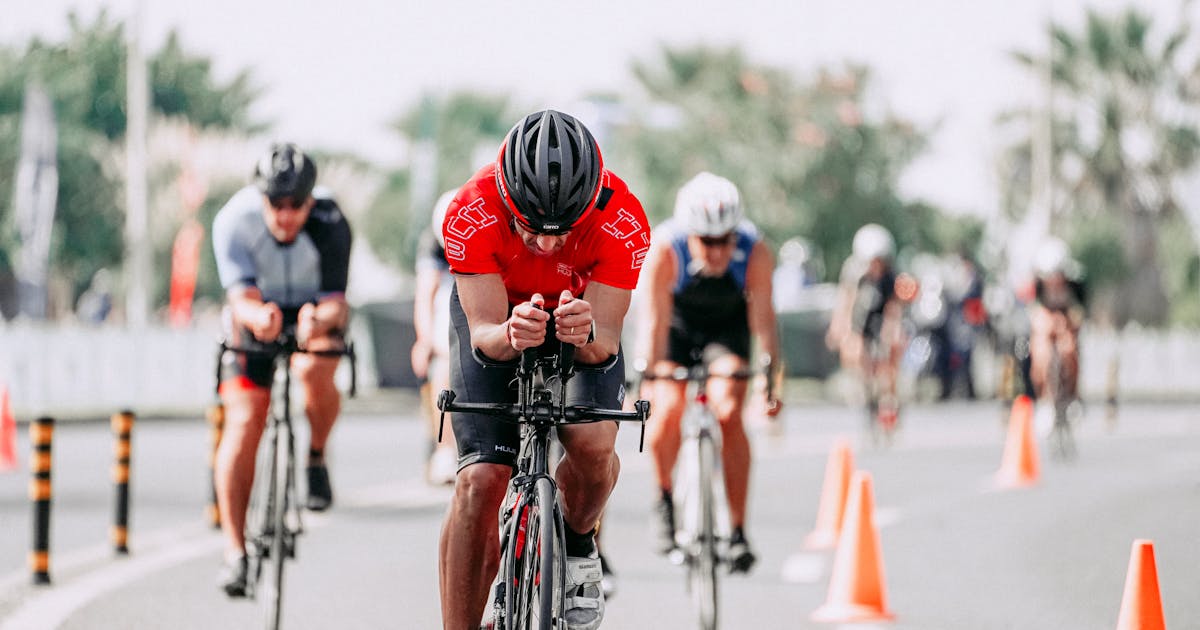Being a sporting category that demands a lot from the athlete, organizing a training routine is essential. Follow the tips we have prepared for training for triathlon
Triathlon is a complex and challenging sport that combines three sports disciplines and, therefore, requires planning so that the training is complete, with the aim of improving running, swimming and cycling, in a proportional way .
This sports category challenges endurance and requires good physical preparation so that you can remain firm and strong until the end of the race.
To understand how to train triathlon effectively, we have prepared some tips that can help you create a routine more focused on the needs of this sport.
Whether you are an elite or amateur athlete, there is some information that is essential and serves as a basis for acquiring a positive experience.
Check it out with us!
1. Organize your workouts
When organizing your training, take into account other activities that are part of your routine, such as work, time with family and friends.
Training shouldn’t mean sacrificing other moments of your day, but you need to adjust your schedule so that you can do a little of everything that’s important.
Think of training as a time to switch off, when your time will be dedicated solely to connecting with yourself and achieving a personal goal.
The intention of training is adaptation and this means that it is important to start slowly, to prepare your body for heavier load levels, consequently.
To achieve this, triathlon training needs to be progressive, that is, the ideal is for the volume of intensity to increase by 10% each new week and the intervals between exercises to be reduced in time.
An important tip is to have a kind of notebook or diary in which you can write down distances covered, pace, heart rate , time it took to complete the exercise, etc.
2. Cross-train
Within triathlon there are three modalities, which are three different types of exercises that require specific training. Thus, through cross-training, you can gain time advantage.
Cross training is the replacement of a modality within the same training cycle, that is, mixing strength exercises with aerobic activities is a type of cross training.
These alternations increase motivation and performance, prevent injuries and help you develop more than one modality simultaneously.
3. It takes strength
You will use a lot of strength during the triathlon race , for example, when transitioning between disciplines or on heavy climbs.
It is necessary to perform strength exercises in the gym not only to develop strength, but also to create resistance and avoid injuries.
The cool thing is to have your personal trainer inform you about your goals, so that they know which are the best devices to develop the strength that triathlon requires.
Another way to work on strength development is using palms during swimming training, heavy presses during bike training and climbing hills during running training.
4. Train in the pool focusing on open water
When training in small pools , remember that you will be swimming in open water where you will often have to breathe while looking forward to locate the buoys and know where you are.
It is also important to have a good stroke frequency at the beginning of swimming to gain distance from other competitors, making it more comfortable to swim.
Therefore, practice breathing on both sides, breathing every three strokes. Also perform hypoxia work, which consists of swimming in the pool, breathing every six or eight strokes, while kicking your legs intensely.
Remember to try to lift your head forward, breathe and continue swimming with small strokes.
5. Practice transitions
You will need to fit the modalities into each other, without breaks. In other words, transitioning from one modality to another.
Going from swimming to cycling can initially generate slight dizziness which, with a lack of training, can be even more intense.
The transition from cycling to running requires a lot of strength, as both modalities require a lot of wear on the lower limbs.
For everything to happen naturally, it is important to train these sudden changes. This type of training will also help you understand which points require more dedication for a better result in the test.
6. Resting is important
If you force your muscles, carrying out incessant training, unfortunately it won’t do any good and the desired result will become even more distant.
Your body needs to recover from all the load received and the ideal is to take a break after two days of heavy training, which will help with recovery, enough to receive the next load, without the risk of injury.
It’s important to listen to your body and, if necessary, include an extra day of rest. Additionally, for every two weeks of heavy training, perform a lighter week.
Test week: what to do?
During race week, your goal should be to store energy. This means not training hard and reducing the amount of training.
Only perform short, light workouts and set aside at least one day of this important week for rest. Taking care of your diet during triathlon is also important.
Avoid fibrous and fatty foods, opting for cereals, bread with jam, skimmed milk and fruits that are already part of your normal diet, as well as foods with a source of lean protein, such as turkey breast and white cheese.
Important detail: do not allow an interval longer than three hours between meals, considering breakfast, lunch and test time for this schedule.
Furthermore, it is essential to have a trainer who can monitor and help you plan your training, focusing on your objective, to reduce the chances of injuries, muscle dysfunctions, such as muscle fatigue , and improve the final result.
For triathlon beginners , the ideal training should be to invest in individual sports and, little by little, add new ones. For example: start by running, then, when you feel comfortable running, add swimming, and so on.
Also remember that, as you acquire physical fitness, the distances and intensities need to increase, ok?
For those who are sedentary or have not practiced sports for more than a year, it is important to start with one modality at a time with increasing training, ranging from walking to running, also gaining experience in tests on these modalities.
TIP: to participate in a long-distance triathlon race , it takes years of dedication, so start with short-term races such as the sprint triathlon and the Olympic triathlon before challenging yourself over long distances. Competitors need to balance technique with experience to perform better.

